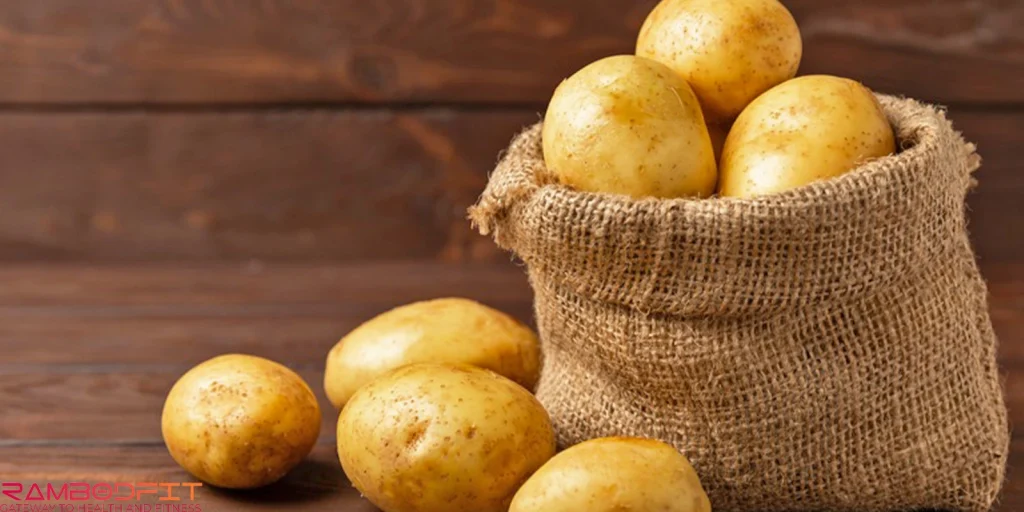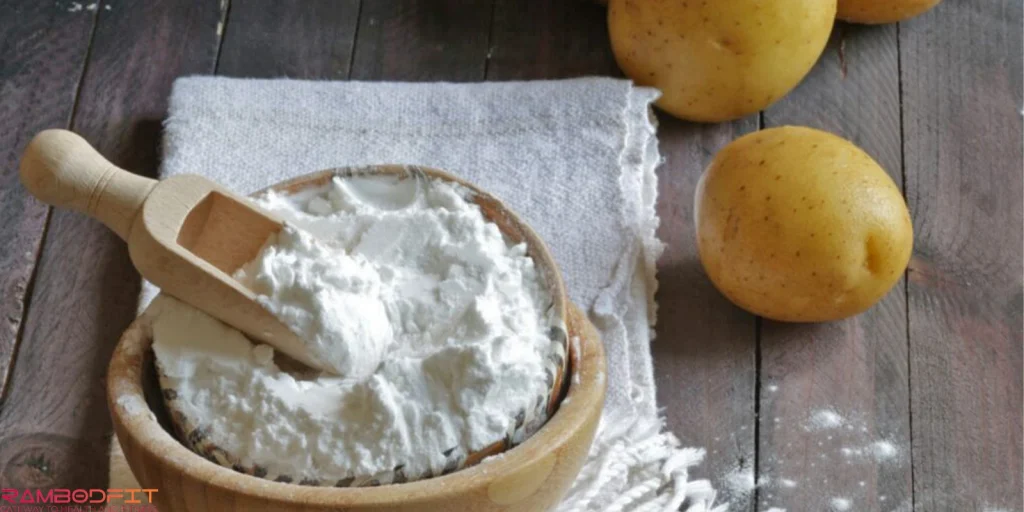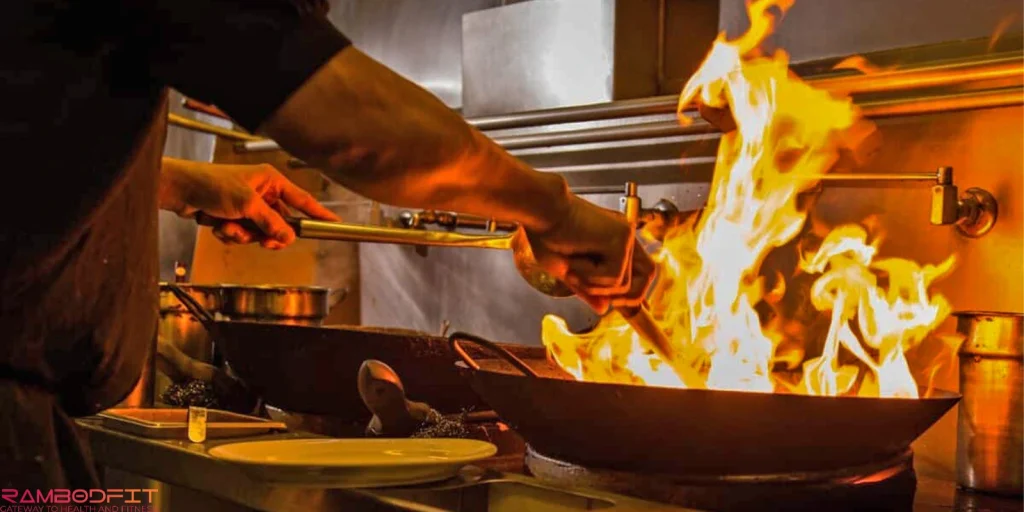


A couple months back, I got way too into counting every damn calorie that hit my plate. Seriously, I was deep in the macros game—wanted to get shredded, you know? Total nutrition nerd rabbit hole. Anyway, one night I’m poking through the fridge, eyeing up some sad, cold leftover potatoes, and I trip over this wild idea:
resistant starch. Get this—supposedly, if you cook starchy stuff like potatoes, pasta, or rice, then cool it down and reheat it, something magic happens at the molecular level. Poof! Fewer calories, plus some bonus points for your gut and metabolism. Then, cooling Potatoes for fat loss may work in that case.
But is it real science or just another “Bro, trust me” moment from the internet? Guess we gotta peel this potato myth on Rambodfit and see what’s actually inside, and is cooling potatoes for fat loss real?
Table of Contents

Alright, here’s the scoop. Resistant starch—yeah, RS for short—is basically this weird cousin of regular starch that just shrugs and refuses to get digested in your small intestine. Normal starch? Your body snaps it up, turns it into glucose, and, boom, blood sugar goes up. RS, though? Nah, it skips all that, cruises straight to your large intestine, and starts acting like fiber. So instead of just fueling you, it feeds your gut bacteria, and those guys crank out stuff like butyrate, which is actually good for your gut. Wild, right?
Now, this is where things get funky: when you cook certain starchy foods and then let ‘em cool, some of the starch does a total 180 and transforms into this resistant version. Like, science magic. And get this—if you reheat it after cooling? Doesn’t undo the trick. Might even boost the resistant starch a bit more. Who knew leftovers could get healthier?
So, bottom line? That leftover mashed potato you nuked in the microwave for breakfast is probably not going to mess with your blood sugar (or your jeans) as much as the fresh stuff. Who said cold pizza was the only leftover worth eating?
Alright, here’s the deal: Can you actually hack your calorie intake just by cooling potatoes for fat loss, pasta, or rice in the fridge for a while? Wildly enough, yeah—you kind of can. It’s not pure magic, but the science checks out that cooling potatoes for fat loss works.
Basically, there’s legit research (like a 2024 study in Nutrients—yes, I’m that much of a nerd) showing you can drop the digestible calories by anywhere from 5% up to 20%. Not a tiny drop in the bucket, honestly. But, of course, there’s always a “but.”
First off, not all potatoes are built the same. Yukon Golds? Not the same beast as a big old russet. Second, how you cook matters. Boiling, baking, pressure-cooking—they all shake things up a bit with the starch magic. Third, the longer you cool them—like, full-on overnight in the fridge—the more resistant starch you get. That’s the secret sauce: resistant starch is way harder for your body to break down, so it skims some calories off the top.
One more twist: whether you eat it cold or reheat it gently changes things a bit, but you still keep most of the benefits.
So yeah, if you whip up a batch of rice, pop it in the fridge overnight, then warm it back up the next day, you’ll probably get fewer calories from the exact same serving. Does this mean you can just slather on extra butter and call it a win? Uh, no. Sorry. But hey, it’s a pretty clever trick to keep in your back pocket if you’re watching your intake. Cooling potatoes for fat loss is one of the many strategies.
Here’s where the story takes a turn. While calorie reduction is an attention-grabbing headline, the real value of resistant starch goes far deeper than just energy balance.
Let’s explore the five powerful effects of incorporating cooled (and optionally reheated) starchy foods into your diet and cooling potatoes for fat loss.
Alright, picture your gut like this wild, bustling city—except instead of people, you’ve got trillions of bacteria hustling for their next meal. Resistant starch is basically the VIP buffet for the good guys down there. These bacteria chow down on RS in your large intestine, and then—like little chemical chefs—they whip up butyrate. This stuff isn’t just some random waste product; it’s practically rocket fuel for your colon cells.
Butyrate’s not messing around. It helps chill out inflammation in your gut. Keeps your intestinal walls strong and leak-free—nobody wants a leaky gut, trust me. Oh, and there’s some science-y chatter about it possibly lowering your risk of colon cancer, so… bonus points?
Here’s the thing: once I started tossing cold rice and potatoes into my meal prep, my stomach got way less cranky. Bloating after pizza night? Way better. Maybe it’s just in my head, or maybe resistant starch is the real MVP. Who knows? But hey, I’m not complaining.
Alright, here’s the scoop for anyone wrestling with blood sugar swings or insulin resistance—resistant starch is seriously underrated. Think of it like carbs with a chill pill. You eat regular white bread or something, and boom, your blood sugar’s bouncing off the walls. Not with resistant starch, though. This stuff takes its sweet time breaking down, so you don’t get that nasty sugar spike and crash. It’s more like a gentle wave instead of a rollercoaster.
And get this: scientists have clocked something called the “second meal effect.” Basically, if you eat resistant starch with lunch, your body actually handles dinner better too. Wild, right? Like, your insulin sensitivity gets a bonus round.
For all the gym rats and meal-preppers out there—here’s a hack. Let your rice or pasta cool before you eat it. That simple move can help keep your energy steady (none of that 3 p.m. zombie mode) and might even give your workouts a little extra oomph. Who knew leftovers could be so strategic?

So, plot twist—turns out chilled carbs actually kept me full way longer than I thought they would. Wild, right?
Here’s the deal: resistant starch messes with your hunger hormones, especially this one called CCK (cholecystokinin—yeah, try saying that three times fast). Basically, CCK tells your stomach to chill out and empties more slowly, then gives your brain a little nudge like, “Yo, we’re good here. Stop eating.” The result?
– I stopped raiding the snack drawer every two hours
– Didn’t have to play Tetris with my meal portions
– My so-called “willpower” got a break
It’s kind of sneaky, honestly. I just found myself eating less without fiddling with a food tracker or obsessing over macros. Small change, big impact—one of those diet wins that flies under the radar.
Honestly, most folks have no clue how often they’re messing with their insulin just by snacking all day or munching on so-called “healthy” carbs every couple of hours. It’s wild. Resistant starch, though? That stuff works like a secret weapon—kinda smooths out those blood sugar rollercoasters and keeps things steady between meals.
Total life upgrade for:
– People dealing with metabolic syndrome (yep, you know who you are)
– Low-carb peeps wanting to sneak in carbs without their insulin going haywire
– Anyone who’s tired of that brain fog or riding the mood swing express all day long
Seriously, it’s like flipping the cheat code for stable energy.
Alright, let’s cut through the noise: tossing your spaghetti in the fridge isn’t some secret ticket to dropping 10 pounds overnight, nor cooling potatoes for fat loss. The calorie drop? Eh, it’s there… but don’t expect miracles. Still, little wins do stack up, especially if you’re not just inhaling pasta by the bucket.
Think: keep your portions sane, stick to actual food (not just beige carbs), and yeah—let your leftovers chill out before you eat ‘em again.
And hey, the good stuff isn’t just about calories. Your gut bugs love this, your blood sugar won’t freak out as much, and you might even feel full for once. Cooling potatoes for fat loss has other benefits as well.

Chilling and reheating stuff like rice or potatoes can slash the calories your body actually absorbs by, what, maybe 20%? Sometimes less, sometimes more—depends on your guts, literally. But, hey, it’s not just about the calories. These foods, when you cool and reheat them, actually do your gut a solid. They help keep your blood sugar from yo-yoing and might even help keep you from raiding the fridge at midnight.
Don’t get it twisted, though—this isn’t some magic fat-melting hack. It’s just another science-backed move you can add to your toolbox for better digestion and metabolism over the long haul.
Honestly, the trick is to use it when it makes sense. Like, meal prepping, or when you need a good pre- or post-workout bite, or maybe you’re just trying to snack smarter without going full diet-monster mode.
But let’s be real: If you’re living off junk food and glued to your couch, tossing your potatoes in the fridge is not gonna save you. It’s just one piece of the puzzle. Still, as far as easy wins go? Not too shabby.
So next time you’re making a big ol’ batch of rice or spuds, just toss ’em in the fridge for the night. Your gut bugs—and maybe even your jeans—might end up loving you for it.
Further Studies
Resistant Starch and Metabolic Health
Uhh, yeah, technically you *could* gnaw on a raw potato… but honestly, why would you do that to yourself? Raw potato or uncooked starch (like green banana flour) is loaded with resistant starch, sure, but your gut might not love you for it.
We’re talking serious bloating and maybe a trip to the bathroom you didn’t plan for. If you actually want the benefits without suffering, cook your potatoes, rice, or pasta—then let ’em chill out in the fridge. Way easier on your stomach, tastes like actual food, and you still get that sweet RS boost.
Nope, and that’s kind of the magic trick here. Once you’ve cooled your rice or pasta, the resistant starch is basically locked in. Throw it back in the microwave or toss it in a pan to warm it up—totally fine. Actually, gentle reheating might even help a bit.
Just don’t go full Gordon Ramsay and fry the life out of it, or crank it to a rolling boil for ages, because you *might* start messing with the starch structure again. But normal reheating? All good.
Alright, here’s the lowdown—if you want to up your RS game, these are your go-tos after they’ve hung out in the fridge: cooling potatoes for fat loss may work in this case.
– Potatoes (the waxy types, like red or Yukon Gold, are champs)
– White rice (Jasmine and Basmati are especially good after cooling)
– Pasta (whole wheat or the fancy legume-based stuff seems to hold on to more RS)
– Green bananas (not everyone’s favorite snack, but hey)
– Beans and lentils (classic fiber boost, RS bonus)